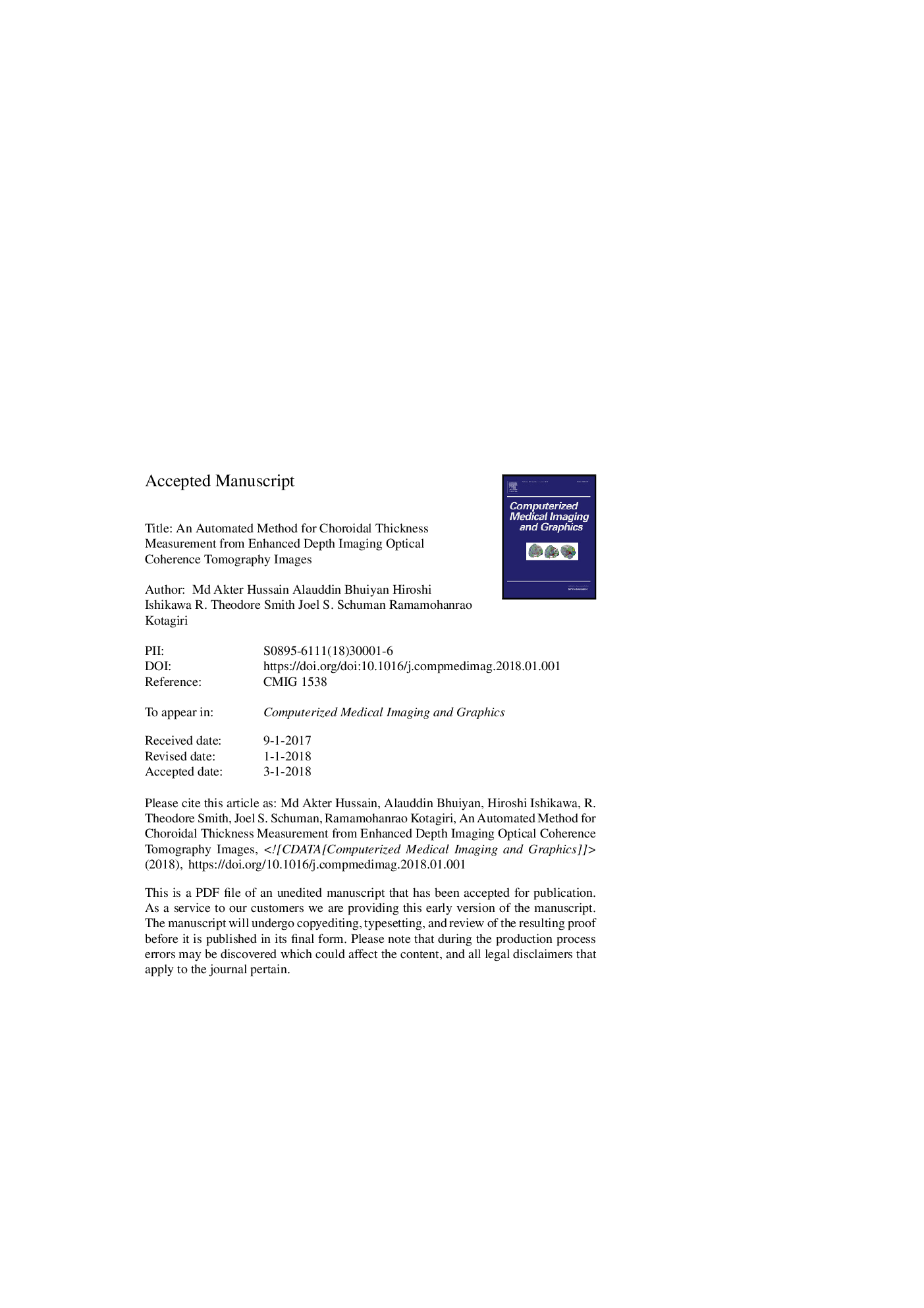| Article ID | Journal | Published Year | Pages | File Type |
|---|---|---|---|---|
| 6920283 | Computerized Medical Imaging and Graphics | 2018 | 40 Pages |
Abstract
The choroid is vascular tissue located underneath the retina and supplies oxygen to the outer retina; any damage to this tissue can be a precursor to retinal diseases. This paper presents an automated method of choroidal segmentation from Enhanced Depth Imaging Optical Coherence Tomography (EDI-OCT) images. The Dijkstra shortest path algorithm is used to segment the choroid-sclera interface (CSI), the outermost border of the choroid. A novel intensity-normalisation technique that is based on the depth of the choroid is used to equalise the intensity of all non-vessel pixels in the choroid region. The outer boundary of choroidal vessel and CSI are determined approximately and incorporated to the edge weight of the CSI segmentation to choose optimal edge weights. This method is tested on 190 B-scans of 10 subjects against choroid thickness (CTh) results produced manually by two graders. For comparison, results obtained by two state-of-the-art automated methods and our proposed method are compared against the manual grading, and our proposed method performed the best. The mean root-mean-square error (RMSE) for finding the CSI boundary by our method is 7.71±6.29 pixels, which is significantly lower than the RMSE for the two other state-of-the-art methods (36.17±11.97 pixels and 44.19±19.51 pixels). The correlation coefficient for our method is 0.76, and 0.51 and 0.66 for the other two state-of-the-art methods. The interclass correlation coefficients are 0.72, 0.43 and 0.56 respectively. Our method is highly accurate, robust, reliable and consistent. This identification can enable to quantify the biomarkers of the choroidin large scale study for assessing, monitoring disease progression as well as early detection of retinal diseases. Identification of the boundary can help to determine the loss or change of choroid, which can be used as features for the automatic determination of the stages of retinal diseases.
Related Topics
Physical Sciences and Engineering
Computer Science
Computer Science Applications
Authors
Md Akter Hussain, Alauddin Bhuiyan, Hiroshi Ishikawa, R. Theodore Smith, Joel S. Schuman, Ramamohanrao Kotagiri,
